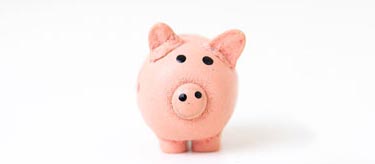Financial literacy 101: save first or pay off debt?
If you’re new to managing money, it’s hard to know where to begin. Should you save first or pay off debt? Should you build an emergency fund? Debt is very emotional, so it’s easy to feel pressure to become debt-free. Yet breaking bad financial habits and building savings can help alleviate financial stress too.
How do you know if you should pay off debt or save cash first? It sounds like a simple question, yet the answer isn’t always clear.
Save or pay off debt?
If your household budget includes categories for savings and paying off debt, you must decide which financial goals to target and prioritize.
Often people think “Pay off all your debt first, then start saving.” While it might make sense mathematically to prioritize debt repayment, it could leave you feeling overwhelmed, and emotionally and financially vulnerable should unexpected expenses arrive.
Creating a financial cushion - even a small one, can be reassuring. This financial cushion is your emergency fund.
Emergency fund
Everyone needs an emergency fund. At the very least, earmark $100 monthly for emergencies before paying down high-interest debt.
An emergency fund lets you pull money from savings if needed. If all your extra money goes towards car payments, student loans, traditional mortgage payments, or other non-readvanceable debt, you can’t access that money for an emergency.
Note: this doesn’t apply to credit cards, lines of credit, home equity lines of credit, or readvanceable mortgages like Evolvespire One that allow you to borrow, pay down, and reborrow again to a predetermined limit.
To make sure your emergency fund doesn’t quickly become a shopping account, it’s wise to name your account “Emergency Fund” in your online banking. Seeing that name will remind you of why you’re saving.
Choose an easily accessible account such as a high-interest TFSA for your emergency fund/savings, so your savings will grow tax-free.
When to pay off debt first
Sometimes it makes sense to prioritize debt payment over savings. For example, if you have high-interest debt (ie. credit card balances and payday loans), an emergency fund, and many years to go before retirement, it could be wise to prioritize debt repayment before adding to savings.
When to prioritize savings
Is your debt all low-interest loans (such as a mortgage)? Or can you consolidate your debt into a low interest secured credit line? If so, it could be a good opportunity to prioritize retirement savings in a TFSA or RRSP.
The shorter your time to retirement, the more important it is to prioritize savings to maximize your tax-free investment growth.
How to prioritize debt or savings
If you’re still struggling to decide how to prioritize your debt or savings contributions, use this simple framework to get started:
- Cover your basic living expenses each month (just the essentials, like rent, utilities, groceries, etc.)
- Build a small emergency fund (this should cover at least one months’ rent, a flight home, groceries.)
- Organize your debt management so you know what debt to pay off first. Start with paying the most to your highest-interest rate loan or debt and pay these off first, while making the minimum payments on all other debt. Credit cards and payday loans are usually the highest rate debt.
- Increase your monthly savings contributions to build a medium emergency fund of at least 3 months’ expenses while making minimum payments on your lower rate debt, such as your secured credit lines.
- Discuss starting long-term savings for retirement and education with your advisor.
How much to save each month
If you struggle with answering “How much money should I save each month?”, the easiest way to find the answer is to begin with your end goal and your desired time frame, then work backward from there.
For example, let’s say you’re building a small emergency fund to cover one month of basic expenses of $3,000 (step 2 above), and you’d like to meet this goal in three months. You’d need to save $1,000 a month after paying your basic living expenses and minimum debt payments.
Once you meet that goal, you could then apply the $1,000 each month towards paying off your highest interest-rate debt.
Of course, the amount you’re able to save will vary based on your income, needs, and goals. If your numbers don’t look like the example we provided, don’t be too hard on yourself.
Consolidating debt to meet debt reduction/savings goals
If you’re a homeowner with good credit and high-interest debt, consider debt consolidation to lower your rate and/or pay off your debt faster.
Consolidating debt involves paying off your current debt with a new loan that lowers your rate or your overall monthly debt payment to help you meet your goals faster. If you keep your total payments the same but reduce your rate you’ll pay off your debt sooner. Or you could take your debt payment savings and apply that amount to your savings goals.
While it’s wise to prioritize paying off your high-interest debt and set financial goals like paying off loans, it’s also important to save as well. Reach out to your advisor today to get help learning how to balance both with a plan that works best for your family.
This information is for informational purposes only and is not intended to provide specific financial advice and should not be relied upon in that regard. Individuals should seek the advice of qualified professionals to ensure that any action taken with respect to this information is appropriate to their specific situation.


